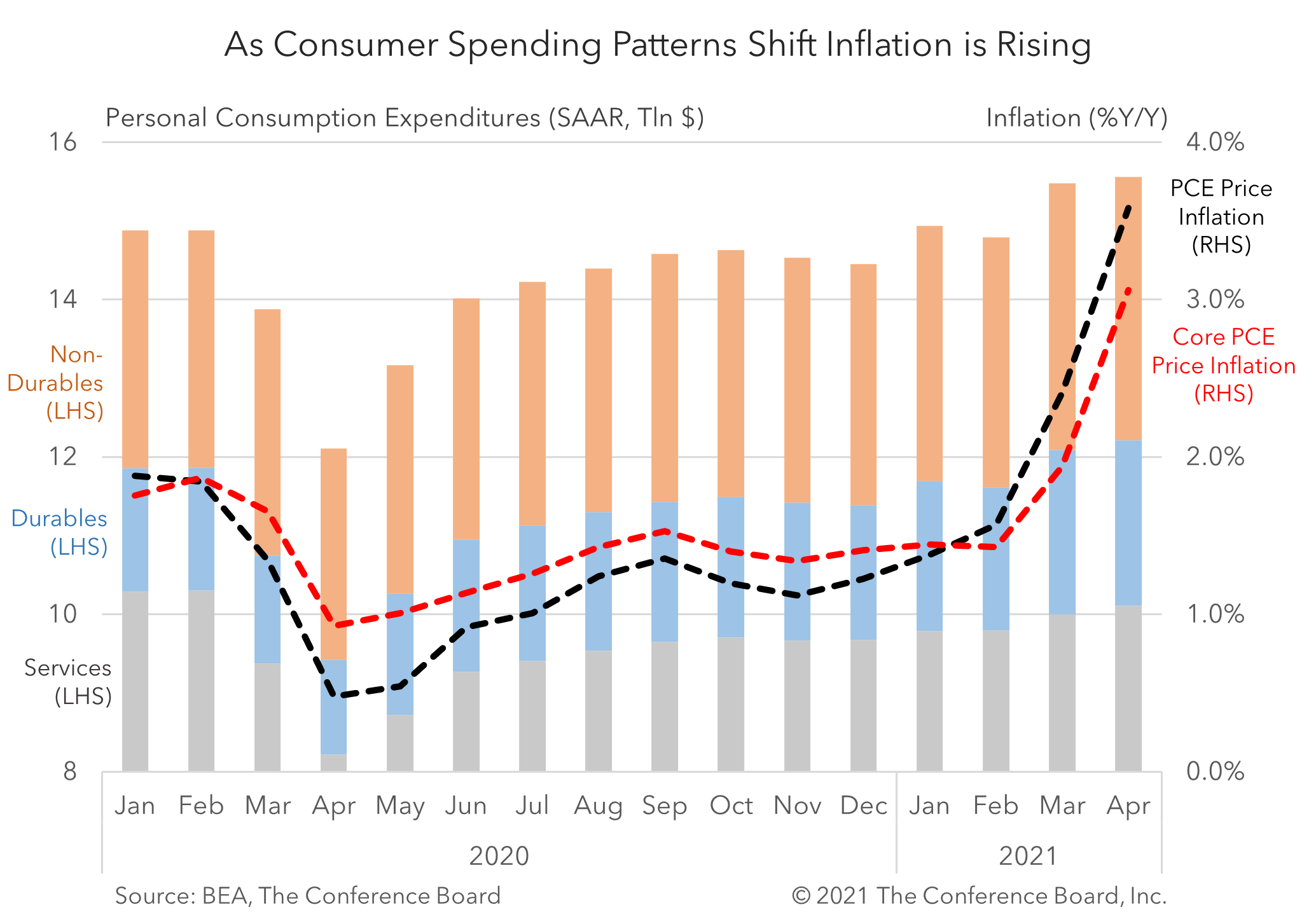April PCE Reaction: Inflation Creeps Higher as Consumers Shift to Services
28 May. 2021 | Comments (0)

April income, spending and inflation data reveal an economy that is on the mend, but not yet fully recovered. Following the distribution of government stimulus checks in March US personal income dipped somewhat in April, as was expected, but the wage component of income continued to rise steadily. Consumer spending was also up from the previous month as stronger spending on services offset a pivot away from non-durable goods. Finally, PCE inflation rose as prices for both goods and services increased from the previous month. Looking forward, we expect the economic recovery to continue over the coming quarters.
PCE inflation continued to rise in April. Headline PCE inflation rose to 3.6% y/y, vs. 2.4% y/y in March. The primary driver of this month’s uptick in prices was associated with durable goods, which rose 1.4% m/m, vs. 0.3% m/m for non-durable goods, and 0.5% m/m for services.Critically, the BEA also reported the Core PCE Inflation rose to 3.1% y/y in April from 1.9% y/y in March. This key inflation metric, which the Federal Reserve tracks closely, could help pave the way for tighter monetary policy later this year.
Personal Consumption Expenditures (annualized) rose by $80.2 billion to $15.6 trillion in April from an all-time high of $15.5 trillion in May. Total US consumer spending is now 4.6%higher than it was in February 2020, just before the COVID-19 pandemic took root in the US. However, the composition of this spending continues to be lopsided. Consumer spending on durable goods is up 35.1% from February 2020 and spending on non-durable goods is up 11.1%. Meanwhile, spending on services (which accounted for over two-thirds of consumer spending in 2019) is down 1.9% from its pre-pandemic level. In April, US consumer spending on goods fell 0.6% m/m while spending on services rose 1.1% m/m. Looking forward, consumer spending patterns are likely to continue to pivot back towards services as the economy fully reopens.
Personal Income (annualized) fell by $3.2 trillion to $21.2 trillion in April, following a record setting $24.4 trillion in March. The distribution of the bulk of a new round of government stimulus checks in March exaggerated these data last month, so the April month-on-month decline was anticipated. However, relative to pre-pandemic levels, Personal Income is now up 10.9% from February 2020 and, critically, income derived from employee compensation is up 4.1% from February 2020. This latter datapoint is especially encouraging, as it underlines the ongoing momentum in the labor force recovery that we expect to continue over the coming quarters.
The personal savings rate fell to 14.9% in April from 27.6% in March. This decline was anticipated and is associated with the timing of government stimulus check distributions. Federal Reserve studies reveal that roughly two-thirds of these funds were saved by households the month they were received. However, even with this decline in the savings rate it remains well above the 7.5% average seen in 2019. As consumer confidence continues to rise and the economy fully reopens, we expect households to dip into these funds to spend – especially on services.
-
About the Author:Erik Lundh
Erik Lundh is Senior Global Economist for The Conference Board Economy, Strategy & Finance Center, where he focuses on monitoring global economic developments and overseeing the organization&rsquo…




0 Comment Comment Policy